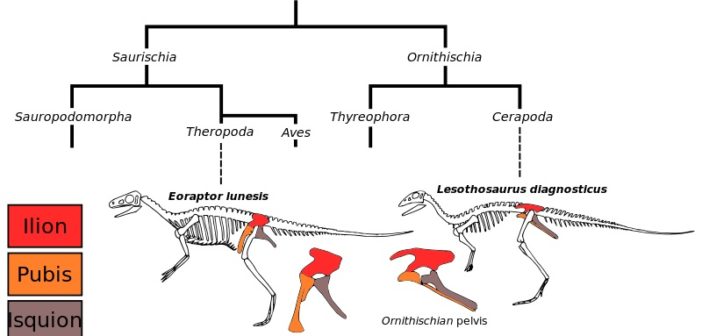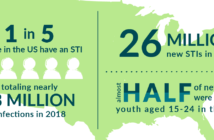[tribulant_slideshow gallery_id=”70″]
By Marie Umholtz
A recent study has the potential to displace long-held theories of how people understand dinosaurs.
For 130 years, according to BBC, paleontologists followed Harry Govier Seeley’s phylogenetic tree that separated dinosaurs into two main categories based on hip bones. Dinosaurs with birdlike hipbones were grouped as Ornithischians, and those with reptile-hips were grouped as Saurischians.
Matthew G. Baron, who is working towards his Ph.D. at the University of Cambridge, along with coauthors/supervisors David B. Norman from the University of Cambridge and Paul M. Barrett from the Natural History Museum of London, published a new hypothesis in Nature, an international science journal, on Mar. 22.
Baron and his associates stated in the study’s abstract, “Our study has found a sister-group relationship between Ornithischia and Theropoda (united in the new clade Ornithoscelida), with Sauropodomorpha and Herrerasauridae (as the redefined Saurischia) forming its monophyletic outgroup.”
They named the new clade, Ornithschia, after a similar grouping made by Thomas Henry Huxley, according to BBC. Huxley also grouped carnivorous reptile-hipped dinosaurs with bird-hipped dinosaurs.
Baron’s study places reptile-hipped theropods, such as the Tyrannosaurus Rex, closer to bird-hipped dinosaurs, as they “eventually gave rise to birds,” according to an article on Science.
The study also suggests that dinosaurs may have appeared about 15 million years earlier than previously thought in the northern hemisphere rather than the southern hemisphere, according to BBC. This is because two fossils from Scotland and England, which had been overlooked for some time, were considered in the study as well.
BBC said, “The latest work also indicates that dinosaurs evolved into meat-eaters on two separate occasions during their evolution and it even implies that the very first dinosaur was omnivorous and therefore ate both plants and meat.”
Science explained that this study argues that theropods and herrerasaurids evolved carnivorous traits separately by convergent evolution. Science also stated that the study “confirms that ‘reptile-like hips’ are not a reliable sign of shared ancestry. The analysis also supports the prevailing idea that the earliest dinosaur ancestor was a small bipedal animal with grasping hands.”
As his study reconsiders dinosaurs’ evolutionary relationships, Baron and his associates looked at hundreds of other traits in fossils and discussed in other studies, according to Science.
“In many cases they relied on subtle details, from the exact shape of a tiny eye socket bone to the presence or absence of a groove on the femur. The devil is in those details—and in the selection of exactly which species and traits to analyze,” as Science reported.
Similarly, William Ellis, an associate professor of biology at Saint Leo University, said, “Phylogenies are best determined with multiple lines of evidence. Anatomy, physiology, behavior, morphology, and DNA can all be used to deduce family trees. However, amongst these, genetic material DNA is less prone to biased interpretation.”
No matter how unbiased DNA testing may be, it is not always an option.
“Because it is presently impossible/unlikely for us to recover dinosaur DNA (sorry Jurassic Park) with any certainty, scientists must recover more and more fossils for morphological analysis. This means that we need to find more fossilized bones and other fossilized structures to measure, characterize, and compare between proposed dinosaur lineages. Even then, acceptance, as it is in any other scientific discipline, is conditional until refuting evidence is found,” said Ellis.
When asked of his personal opinion regarding the new study, Ellis responded, “On first reading, the work seems solid. However, I await further work of paleontologists to clarify the situation.”
While this new study sheds interesting insight into dinosaur evolution, it needs further research and evidential support, as Science said it will probably be under much scrutiny for a while.
Ellis explained, “This is a single study. Science is generally reluctant to displace old ideas for new without a preponderance of evidence.”





